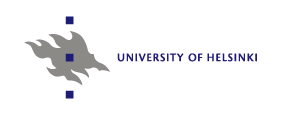TOIMO Ontology
Persons, companies and organizations are examples of agents.
Agents (or actors) are central element in many systems.
The goal of TOIMO is to design and implement ontologies and tools for describing different kinds of agents.
Agent's identity, roles and connections to other agents form the main problems. How should agents be identified?
What kind of data set could be used to describe a person? What new information can be obtained by connecting agents
to other agents or knowledge bases. The questions are interdisciplinary.
In TOIMO, the problems are approached by means of semantic web. Integration of
ULAN archives to
Kulttuurisampo works as a case study.
TOIMO ontology is created as a part of the
FinnONTO project.
Contact:
Prof. Eero Hyvönen
Aalto University and University of Helsinki
firstname.lastname@aalto.fi
In Finnish:
Toimija-ontologia (TOIMO)
Henkilöt, yritykset ja yhteisöt ovat esimerkkejä toimijoista. Monissa järjestelmissä toimijat ovat keskeisessä roolissa.
Toimo-projektin päämääränä on kehittää ontologioita ja työkaluja toimijoiden hallitsemiseen.
Toimijan identiteetti, roolit ja kytkennät toisiin toimijoihin muodostavat keskeisimmät kysymykset.
Kuinka toimijat tulisi yksilöidä, jotta voidaan varmuudella sanoa kuka kukin on? Minkälaisella tietojoukolla henkilö tulisi esittää?
Mitä uutta informaatiota saadaan, kun toimijoita yhdistetään muihin tietovarastoihin?
Tietojenkäsittelytieteen lisäksi ongelmat sivuavat niin filosofisia kuin lainopillisiakin kysymyksiä.
Toimo-projektissa toimijoiden ongelmaa ratkotaan semanttisen webin keinoin. Tapaustutkimuksena on kansainvälisiä taiteilijoita
sisältävät ULAN-arkiston liittäminen
Kulttuurisampoon.
Toimija-ontologian kehitystyö on osa
Suomalaiset semanttisen webin ontologiat
-projektia.
Lisätietoja:
Prof. Eero Hyvönen
Aalto-yliopisto ja Helsingin yliopisto
firstname.lastname@aalto.fi
2009
Tomi Kauppinen, Heini Kuittinen, Jouni Tuominen, Katri Seppälä and Eero Hyvönen:
Extending an Ontology by Analyzing Annotation Co-occurrences in a Semantic Cultural Heritage Portal.
Proceedings of the ASWC 2008 Workshop on Collective Intelligence (ASWC-CI 2008) organized as a part of the 3rd Asian Semantic Web Conference (ASWC 2008), Bangkok, Thailand, February 2-5, 2009.
bib pdf Ontologies aim to capture knowledge about things and their relationships. Publishing ontologies on the Semantic Web enables people and organizations to use shared ontologies in annotating e.g. photographs, videos, music, and other types of cultural objects. Search engines also use relationships provided by ontologies in semantic search, e.g. for query expansion or for view-based search. However, building ontologies is a time-consuming process, and it should be helped by automatic finding of interesting, possible relationships. Finding the correct concept for annotation purposes is helped by subsumption and partonomy hierarchies and associative relationships. In this paper we show how an analysis of co-occurrences of concepts in annotations can be used to provide interesting relationships for enriching ontological structures. We use association rule mining techniques and test the idea using a set of annotations of cultural objects in CULTURESAMPO portal and the Finnish General Upper Ontology YSO. The results are visualized in the ONKI SKOS browser to give an additional layer on top of the original relationships of the YSO ontology. An analysis shows that best ranked relationships should also be included in the ontology as subclassof or associative relationships.
2007
Jussi Kurki and Eero Hyvönen:
Relational Semantic Search: Searching Social Paths on the Semantic Web.
Poster Proceedings of the International Semantic Web Conference (ISWC 2007), Busan, Korea, Nov, 2007.
bib pdf This paper presents a system for searching semantic relations between web resources, in our case significant persons of art history. The system is based on the Union List of Artists Names (ULAN) metadata of some 120,000 persons and organizations.
Eero Hyvönen, Robin Lindroos, Tomi Kauppinen and Riikka Henriksson:
An ontology service for geographical content.
Poster Proceedings of the International Semantic Web Conference (ISWC 2007), Busan, Korea, Nov, 2007.
bib pdf Geographic place names are widely used but are semantically often highly ambiguous. For example, there are 491 places in Finland sharing the same name Isosaari (great island) that are instances of several geographical classes, such as Island, Forest, Peninsula, Inhabited area, etc. Referencing unambiguously to a particular Isosaari , either when annotating content or during information retrieval, can be quite problematic and requires usage of advanced search methods and maps for semantic disambiguation. This paper presents an ontology server, ONKI-Paikka, for solving the place finding and place name disambiguation problem. In ONKI-Paikka, places can be found by a faceted search engine, combined with semantic autocompletion and a map service for constraining search and for visualizing results. The service can be connected to legacy applications cost-effectively by using Ajax-technology in the same spirit as Google Maps that is used in ONKI-Paikka as a subservice.
2005


